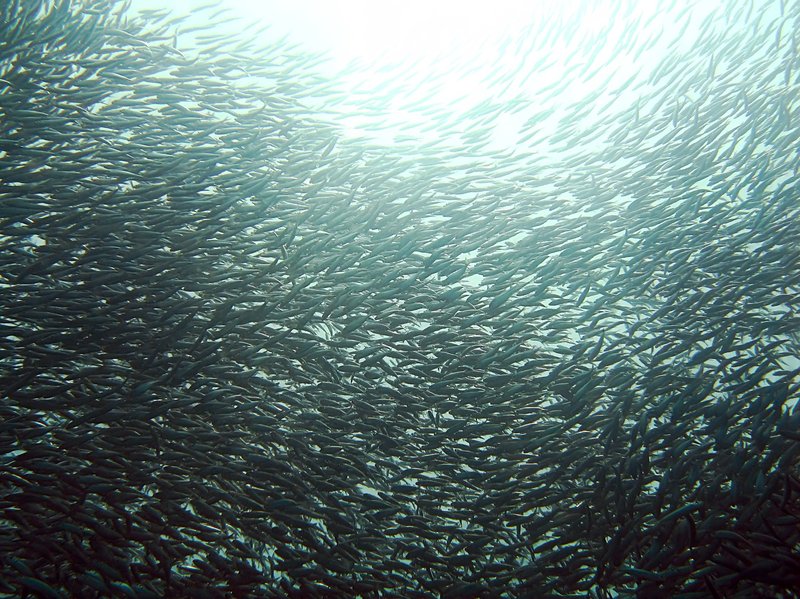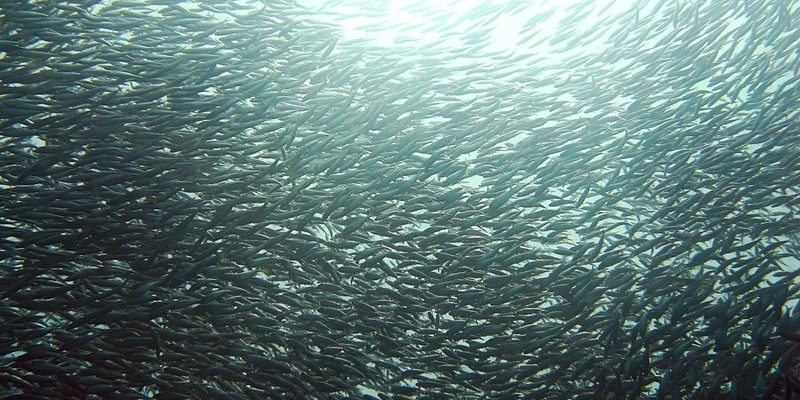
Sardines are most commonly associated with the open ocean, but they can also be spotted in coastal areas and even some rivers. They flourish in various habitats, ranging from the cold waters of the Atlantic to the warm, nutrient-rich waters of the Pacific. Let’s dive into the different environments where sardines are typically found, exploring how these habitats influence their behavior, populations, and interactions with other marine life.
Sardines in the Open Ocean
When we talk about where sardines are found, the open ocean is the first place that comes to mind. These fish thrive in pelagic zones, which means they live in the water column, away from the bottom and shorelines. Generally, you’ll find them in waters that are between 20 to 80 degrees Fahrenheit.
You might be wondering why sardines prefer these specific temperatures. Here’s the thing: Warm waters are rich in nutrients, which is crucial for sardine survival. These waters are often alive with phytoplankton, the small plants that provide food for sardines and other fish. So, when the conditions are just right, sardines gather in large numbers, creating schools that can be a sight to behold. It’s almost like an underwater dance where thousands of sardines move together, making them look like a shimmering cloud.
Not all open ocean areas are created equal. Sardines tend to gravitate towards continental shelves, where the ocean floor rises toward the shore. This region provides a perfect blend of warmth and nutrients, which supports both sardines and their predators, like larger fish and birds. The California Current and the Benguela Current are prime examples of areas where sardines flourish, benefiting from the rich upwelling that brings nutrients to the surface.
Sardines Along the Coast
While deep waters are a mainstay, sardines don’t shy away from the coast. Coastal regions serve as crucial habitats, especially for breeding and feeding. In these areas, you can often find sardines swimming near the surface, basking in the sun’s warmth. You could think of these coastal zones as their social gathering spots where they come together to feed and reproduce.
One key aspect of coastal habitats is that they often have estuaries – where rivers meet the ocean. These areas provide a nursery for younger sardines, as the calmer waters are safer from larger predators. The mix of fresh and salty waters creates a rich environment where juvenile sardines can find plenty of food and shelter.
Interestingly, sardines also adapt to seasonal changes in coastal waters. During certain times of the year, they might move closer to shore to spawn, taking advantage of the nutrient-rich waters that support ample food sources. This migration is vital for their lifecycle and contributes significantly to local fisheries.
The Role of Upwelling
If you’ve ever been to the beach and noticed that the water is colder at certain times, you may have witnessed the effect of upwelling. This natural phenomenon occurs when deep, nutrient-rich waters rise to the surface. It’s like a chef bringing the freshest ingredients to the table! For sardines, upwelling zones are often hotspots of activity.
In regions like the Peruvian upwelling, sardines gather in incredible numbers, thanks to the plethora of nutrients that support phytoplankton growth. This process not only sustains sardines but also attracts predators like tuna and seabirds, creating a bustling ecosystem. Here’s why this matters: Upwelling zones aren’t just important for sardines; they’re key to the entire marine food web.
Moreover, scientists have shown that these areas are highly productive, which means they can sustain large populations of sardines. The cyclical nature of upwelling ensures that food is available throughout the year, allowing sardines to thrive in these rich environments.
Sardines in Freshwater Rivers
You might be surprised to hear that sardines can also be found in some freshwater rivers or near river mouths. This isn’t their typical habitat, but certain species, like the European sardine, can tolerate lower salinity levels. Imagine a fish that’s comfortable in both salty ocean water and the sweeter taste of river water – that’s just how adaptable sardines can be!
The mix of nutrients from rivers can create a unique feeding ground for sardines. When rivers flow into the ocean, they carry a buffet of organic matter and nutrients. This transition zone is rich in food sources, making it an attractive spot for sardines to hunt.
However, this isn’t the case for all species of sardines. Some prefer to stick to purely ocean habitats, while others have evolved to take advantage of these transitional areas. The ability of certain sardines to thrive in both environments showcases their resilience and adaptability.
Global Distribution of Sardines
Sardines are found in many oceans around the world, but they have specific regions where they’re most abundant. You’ll see them in the Pacific Ocean, particularly along the coasts of North and South America, as well as the Atlantic Ocean, especially around Europe and Africa. These regions provide the right mix of conditions, from temperature to food availability.
For instance, the Mediterranean Sea is another hotspot for sardines. Here, the warm waters attract not only sardines but a variety of marine life. This area has a long history of fishing that dates back centuries, with sardines playing a significant role in local cuisines.
But the story doesn’t end there. Climate change and overfishing can greatly affect sardine populations and their habitats. As oceans warm and nutrient distributions change, we may see shifts in where sardines can thrive. It’s a reminder that while these fish are adaptable, our actions play a huge role in their future.
In summary, sardines are remarkable little fish that thrive in a variety of environments. From the deep open oceans to the bustling coasts and even some freshwater rivers, sardines have proven their adaptability. These fish not only feed on the rich nutrients found in different habitats, but they also play a pivotal role in the marine ecosystem.
Understanding where sardines are found is essential for appreciating their importance and the broader health of our oceans. Whether you enjoy sardines right from the can or as part of a delicious dish, knowing their journey from sea to plate adds another layer of connection to this fascinating fish. So, the next time you spot a can of sardines, think about the oceanic adventures these little swimmers have had before making their way to you!

